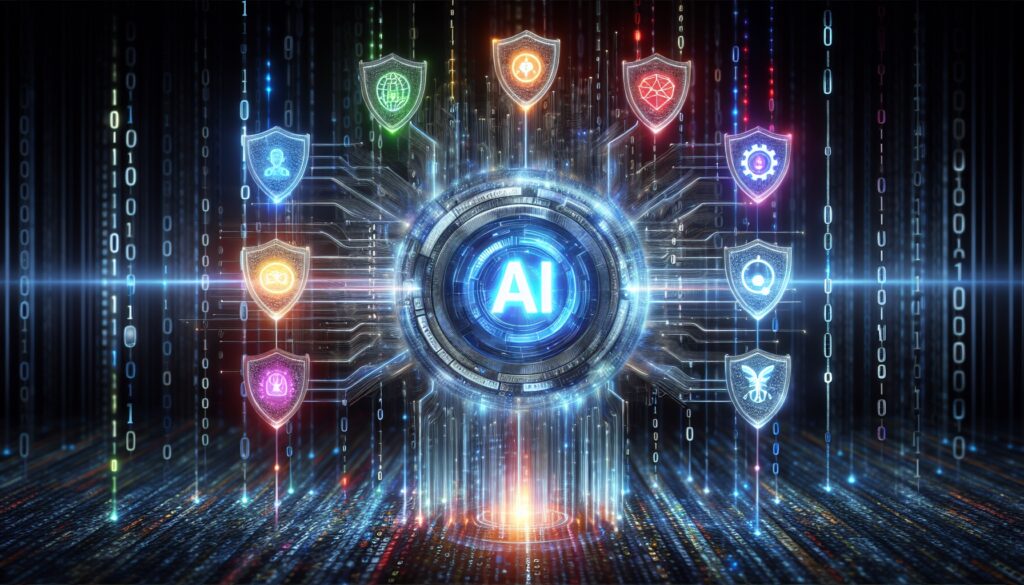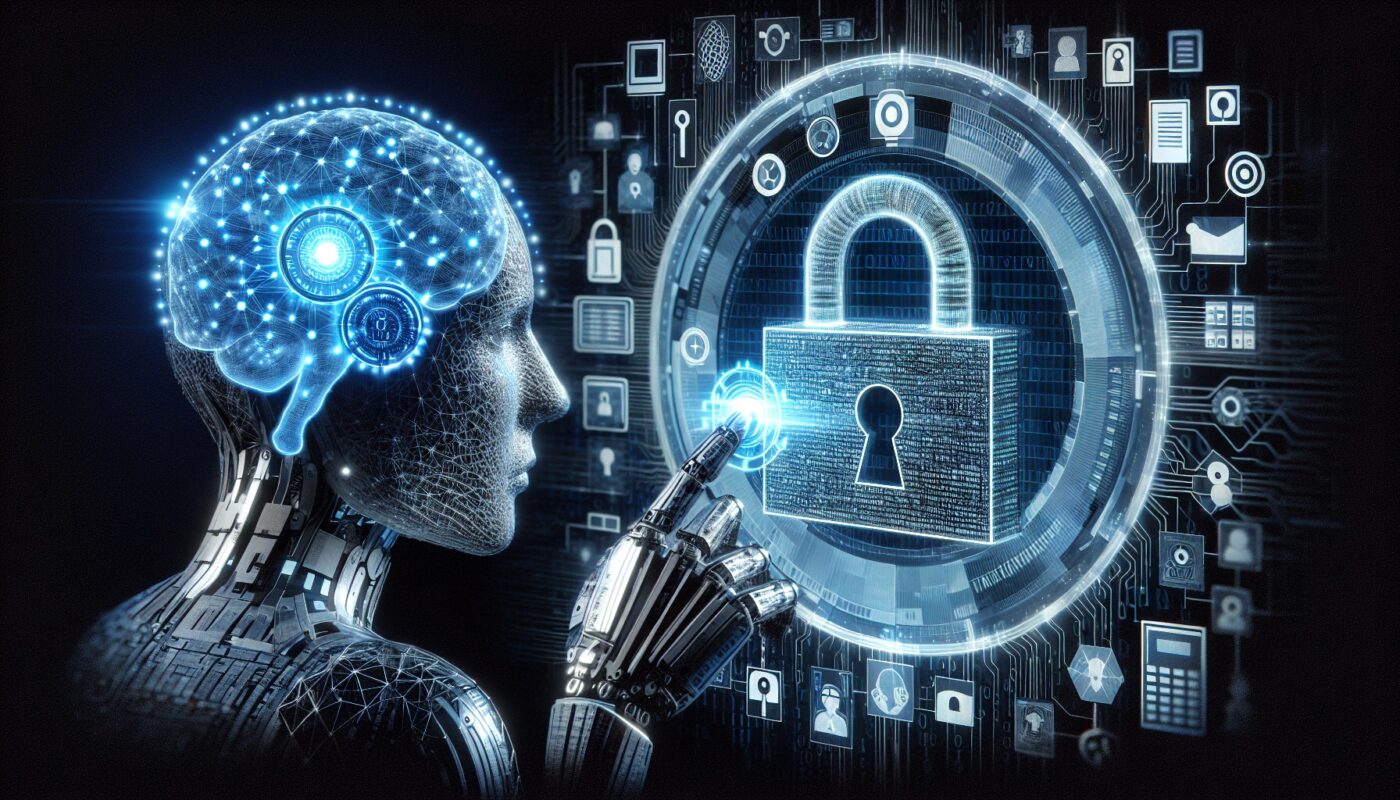Cybersecurity has become a crucial issue for businesses and individuals alike. At the same time,artificial intelligence (AI ) is making considerable strides, offering new opportunities for strengthening protection against IT threats. This article looks at the main advantages of AI in the field of cybersecurity, and the challenges that need to be overcome to fully exploit its potential.
The benefits of artificial intelligence for cybersecurity
AI offers several major advantages for improving IT security and preventing the risk of cyberattacks:
- Proactive threat detection: Thanks to its machine-learning capabilities, AI can analyze huge volumes of data and quickly identify anomalies or malicious behavior likely to indicate a computer attack.
- Rapid incident response: AI can also speed up the resolution of security issues by automating certain tasks, such as isolating a contaminated network to prevent the spread of a virus, or instantly blocking a user whose activity proves suspicious.
- Improved vulnerability management: AI-based cybersecurity systems provide a more accurate and up-to-date view of the vulnerabilities present within the IT infrastructure, enabling them to be corrected more effectively and limiting the risks associated with security breaches.
- Optimized protection against impersonation attacks: AI can help strengthen user authentication by analyzing user behavior for signs of impersonation or unauthorized access to sensitive data.
Challenges to overcome in order to take full advantage of artificial intelligence
Despite these undeniable advantages, the successful implementation of AI in cybersecurity requires addressing several challenges:
- Ensuring data quality and reliability: The performance of machine learning algorithms depends greatly on the quality of the information they have at their disposal. It is therefore vital to ensure that data is accurate, up-to-date and free from errors or bias, in order to avoid inaccurate detections or false positives.
- Controlling the ethical impacts of automation: The use of AI for surveillance, control or sanction raises ethical and legal issues that need to be taken into account when designing and deploying AI-based security solutions.
- Protecting AI systems against malicious attacks: AI-based cybersecurity tools themselves can be targeted by cybercriminals, who seek to manipulate them or render them inoperative. Securing the learning process and the data used is therefore a major requirement to guarantee the effectiveness of these systems.
The future of combining AI and cybersecurity

The opportunities offered by artificial intelligence to improve protection against IT threats are considerable. To ensure optimum use of this technology, several areas of development and research are essential:
- Strengthen collaboration between industry players: Sharing knowledge, methods and information is crucial to making progress in understanding risks and effective defense mechanisms. Companies, institutions and research organizations have every interest in working closely together to exchange data and best practices in the field of cybersecurity and AI.
- Train professionals in the technical and ethical skills required: The rapid expansion of information technologies and interconnected networks means that we need experts who can not only master the challenges of IT security, but also understand the ethical and legal implications of their actions. Initial and continuing training must take these dimensions into account, to prepare professionals as effectively as possible for the challenges of the sector.
- Investing in research and innovation: Digital transformation and the exponential growth of data generated by human activities on the Web mean that cybersecurity tools need to be constantly adapted. Investment to stimulate innovation and improve systems based on artificial intelligence is therefore a key lever for increasing resilience to cyberattacks.
Going further: specific areas of application for AI in cybersecurity

Some branches of artificial intelligence offer particularly interesting potential for strengthening IT security and preventing attacks:
- Deep learning: This approach relies onartificial neural networks capable of processing gigantic masses of data to detect trends, similarities or anomalies. In particular, deep learning is used to identify unknown malware signatures or predict new attack techniques developed by cybercriminals.
- Natural language understanding: Algorithms capable of decrypting, interpreting and generating texts in natural language are a major asset in preventing certain forms of cyberthreats, such as phishing or identity theft via e-mail. They also make it possible to secure electronic communications and protect the confidentiality of information exchanged.
- Multi-agent systems: In the context of cybersecurity, these systems aim to deploy a multitude of interconnected, autonomous intelligent agents responsible for monitoring, analyzing and reacting to the various threats to the IT infrastructure. This approach increases the responsiveness and overall effectiveness of existing safety systems.





